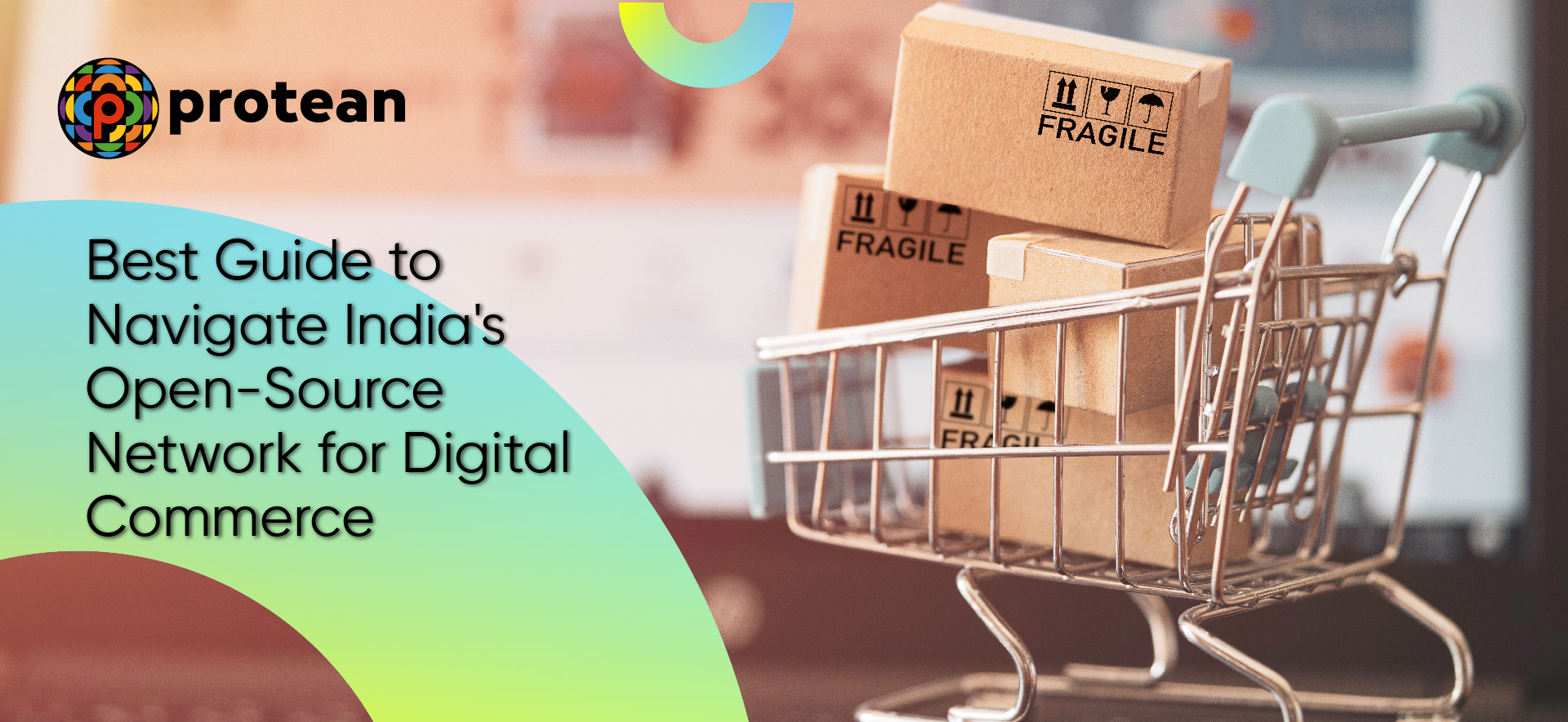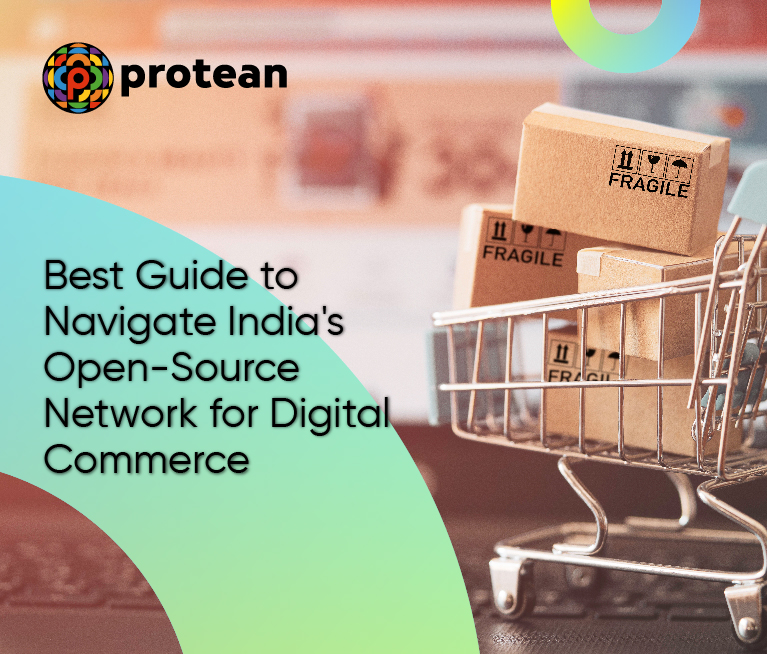The Indian Government has launched the ONDC to enable small sellers to build their presence in the online e-commerce space. The acronym ONDC stands for Open Network for Digital Commerce. It is an open-source network that aims to revolutionise the country's e-commerce space. To accomplish this vision, the various ONDC apps provide hyperlocalised services and product deliveries across the nation.
This not only ensures market competitiveness for sellers but also ensures fairer treatment towards the end users. To know more about ONDC, read through this detailed guide.
How the ONDC Platform Operates
ONDC relies on the open-source methodology to democratise the process of online shopping. It interacts with third-party applications that are a part of the ONDC registry. This ensures open specifications and open network protocols to steer clear of any centralised platform allowing buyers and sellers to stay independent.
Whether you are craving fast fashion or longing to book a cab, installing different apps for all such needs can really be retarding. Right here, an ONDC platform introduces a whole new model that makes online purchases more viable. Also, the e-commerce hubs do not get to stipulate the commissions unilaterally thereby impacting the prices of end products.
Through its open-source network, ONDC-registered sellers find an easy way to showcase their offerings and interact with the customers. They get to access location-based tags helping them target specific audiences. In addition, utilising the open-source framework, vendors can access only the bare minimum details of their clientele that support remarketing and quality services.
Finally, ONDC shopping portals depend on Distributed Ledger Technology or DLT to fortify payment gateways. Therefore, you may continue making transactions with unknown vendors who are already registered with ONDC without worrying about fraud. Every minute transfer of data bits across these platforms is backed by a robust blockchain network which ultimately contributes to the credibility of this decentralised platform.
Significance of Open Network for Digital Commerce
In India, the whole point behind incorporating ONDC within the e-commerce space is projected towards improving overall customer value, encouraging newer entrepreneurs, and standardising logistics operations.
By the end of FY 2027-28, the implementation of the ONDC network combined with other traditional channels will most likely expand India’s e-commerce ecosystem to approximately US$200 billion.
Here are some of the essential points speaking of the significance of ONDC websites at present:
- Smaller sellers enjoy more discoverability and interoperability online via ONDC without having to invest large sums.
- Logistics companies can standardise their operations to satisfy customer expectations who now have several choices, thanks to ONDC's transparent interface.
- ONDC marketplaces encourage innovations in the realm of food delivery, mobility, consumer goods, and so on. This empowers suppliers to brainstorm new ways of gaining market share.
Most importantly, with the widespread adoption of ONDC, sellers can now reach out to untapped markets. Local vendors can now focus more towards refining their offerings instead of fearing traders who previously captured the demands through deep discounting, predatory pricing, stringent rulemaking, etc.
Roadblocks in Indian E-Commerce Solved Through ONDC
Below, you may refer to some of the major challenges that previously used to disrupt the country’s digital e-commerce space. Now, these factors pose no such threats to buyers and sellers who accept this open-source network.
- Regulatory Challenges
Establishing open networks for digital commerce involves navigating complex regulatory frameworks. Compliance with data protection, privacy laws, and ensuring fair competition does not require substantial effort when done via ONDC.
- Technical Interoperability
Integrating various digital platforms, payment systems, and e-commerce portals used to be quite challenging for many businesses due to different technical standards and protocols. Now, the ONDC platform ensures seamless communication among different entities of the open network.
- Security and Fraud Prevention
Conventional e-commerce platforms are vulnerable to cyberattacks, data breaches, and fraud. Implementing robust security measures, encryption protocols, and user authentication mechanisms through ONDC mitigates these risks.
- Stakeholder Cooperation
Collaborating with various stakeholders, including e-commerce companies, payment gateways, banks, and government agencies, requires aligning diverse interests and business models. The pioneers of the ONDC framework have managed to pull off this task successfully.
- Infrastructure and Connectivity
In India, ensuring reliable and widespread internet connectivity is essential for the success of any digital commerce network. ONDC partners are attempting to overcome infrastructural limitations by providing affordable access to remote areas.
- Scalability
As the user base grows, the open network infrastructure will be scalable to handle increased traffic and transactions without compromising performance.
- User Trust and Adoption
Building trust among users is crucial for the success of any digital commerce initiative. Customers need to be confident that their data is handled securely and that transactions are conducted transparently. Implementing robust security measures, encryption protocols, and user authentication mechanisms within ONDC not only helps mitigate risks but also fosters trust and encourages user adoption, ultimately contributing to the platform's success.
What Are the Benefits of ONDC?
The Open Network for Digital Commerce consistently augments value for merchants and consumers by introducing multiple open protocols and network specifications. To put out simply, here are some outright advantages that you would gain by switching to ONDC:
- The registration fee to become an ONDC member is much lower compared to commissions charged by reputed e-commerce platforms. The Department for Promotion of Industry and Internal Trade (DPIIT) deliberately follows this policy to boost the Indian economy.
- The true democratisation of our country's digital commerce sector is possible through the ONDC network as it drastically cuts down associated channel costs.
- Increased focus towards network transparency results in a common seller registry which helps vendors plan their strategies accordingly.
- Just like UPI payment platforms, ONDC marketplaces provide sufficient room for networking; its widespread adoption is just a matter of time.
- As most reputable banks have already certified various ONDC apps, deciding to use this facility instead of several others, seems to be a meaningful option.
How Does the ONDC Network Transform User Experience?
The advent of open networks apps and websites has ushered in a profound transformation in the realm of online shopping, significantly enhancing customers’ experiences. These platforms facilitate seamless interactions among various e-commerce marketplaces, payment gateways, and service providers, enabling customers to navigate a diverse range of products and services with unprecedented ease.
By breaking down traditional silos and fostering collaboration, ONDC offers shoppers a unified and personalised experience across multiple online channels. Customers now enjoy streamlined checkout processes, integrated payment options, and real-time inventory updates, reducing friction and enhancing convenience.
Furthermore, the ONDC network promotes innovation by allowing third-party developers to create value-added applications that cater to specific customer needs, amplifying tastes and customisation. In essence, the advent of the Open Network for Digital Commerce has redefined the online shopping landscape, empowering customers with enhanced choices, smoother transactions, and tailored interactions.
This may revolutionise the shopping experience for consumers in the same way UPI transformed online payments in India.
Future of ONDC in India
Till now, you have understood how the ONDC platform helps reshape the digital commerce system holistically. The underlying mechanisms are constantly working towards establishing a transparent network for online buyers and sellers.
With this ever-expanding technology in place, Indian consumers' expectations are touching new heights. This is compelling the Government to bring in more innovations via its ONDC initiative.
On scrutinising minutely, you will witness the implementation of Application Programming Interfaces (APIs) in designing this open-source network. These offer a transparent system to all sellers, allowing them to access a vast pool of data related to customers, pricing, product trends, etc. Such information was previously available to only leading e-commerce brands.
At your end, the payment procedure becomes more streamlined with everything being monitored in a standardised way. Even more important is that you don’t need to look for offers elsewhere as all your favourite sellers will be present at a common marketplace. This will make all your booking and shopping experiences a lot more personalised.
To date, more than 40,000 sellers have been listed on ONDC apps. Such excellent numbers will surely attract new players in this field in the near future. As budding entrepreneurs aspire to become a part of this seismic shift, they will adopt the new regulations to enjoy unparalleled inclusivity and exposure.
Most importantly, ONDC is a non-profit project. It aims to bag success for all of its partners, including sellers, buyers, suppliers, logistics companies and every other entity involved in the process. Right now, the root cause of customer pain arises out of the lack of operational standardisation of online businesses. This will be completely eliminated once ONDC websites take over the conventional e-commerce platforms. Also, the vendors will leverage this new infrastructure to explore new markets at lesser expenses.
Protean backs the Open Network concept and has played a key role as a founding member in establishing ONDC Ltd under DPIIT's leadership. Protean is committed to driving the adoption and long-term sustainability of this concept.
Final Words
The Indian e-commerce sector will most likely completely transform after ONDC is entirely integrated into the system. It will be good news for small business owners, customers, logistics companies and other stakeholders as they explore new modes of transactions.
Frequently Asked Questions
- In which cities ONDC is available in India at this moment?
ONDC’s beta phase has already been launched in cities like Chennai, Kolkata, Mumbai and Bengaluru. Besides these metro cities, you’ll also get this facility in Delhi NCR (Noida, Faridabad and Gurugram). The number of cities is expected to gradually increase with wider adoption.
- How many sellers have already registered with ONDC?
At present, more than 40,000 sellers have collaborated with ONDC. This boasts the extensive reach of a centrally-backed initiative. It has generated 8 different digital commerce categories across various open-source platforms.
- Will ONDC replace Amazon?
The Indian Government is heavily backing ONDC platforms to promote budding entrepreneurs and small retailers across India. With gradually increasing adoption, there is a hope that ONDC will capture the majority of the fast-growing Indian e-commerce market. Whether that replaces or minimises Amazon’s influence remains to be seen.

